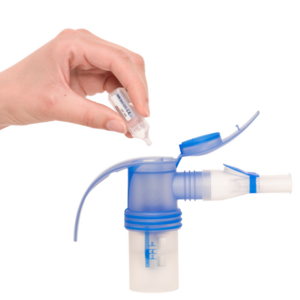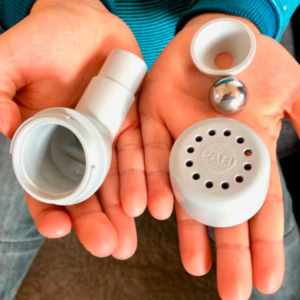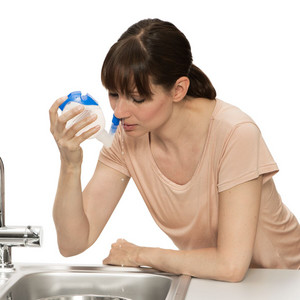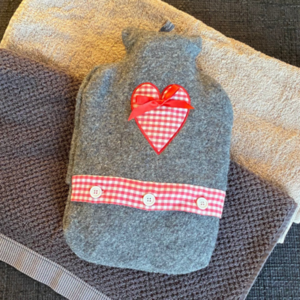Tuesday, 1. April 2025
Coughing can be strenuous and annoying. Home remedies against coughing and against a dry cough can ease symptoms and complaints. So you can help yourself feel better. Which of the home remedies to choose always depends on the type of cough and what triggers it.

Home remedies against a cough do not fight what is causing the cough; nor do they cure it. All they can do is help to loosen the mucus, reduce the urge to cough and support the healing process. Home remedies against a cough are in no way a substitute for medical treatment.
If you have a severe, persistent or chronic dry cough or if you have a cough that is accompanied by pain, fever or yellow, green or even bloody sputum, you should seek urgent medical attention to investigate the cause.
To naturally soothe your cough, you can try the following at home.

One of the most popular home remedies against a cough is to drink plenty of herbal tea – and rightly so. Firstly, drinking helps in general to liquify the mucus and keeps the mucous membranes moist from the inside out. Moist mucous membranes are essential for good respiratory health.
Dry mucous membranes, on the other hand, do not have the protective barrier they need to fight pathogens. Also, dry bronchial mucous membranes tend to become irritated more quickly, which can either cause or exacerbate a dry cough. The warmth of the herbal tea is also soothing.
Inhalation therapy with saline solution can help against a cough. That is because inhalation therapy is a tried and tested method for treating respiratory diseases. This is the most direct delivery method: The active agents reach where they are needed, i.e. the lungs.

The mist from a saline solution only reaches the bronchial tubes if it is generated by an inhalation device with a nebuliser such as the PARI COMPACT2. The inhalation device disperses the saline solution in droplets fine enough to enter the lungs.
The soothing inhalation therapy takes less than 10 minutes with a 2.5 ml ampoule and, depending on the inhalation solution, moistens the lungs or also acts as an expectorant.

Inhaling medically produced saline solutions with an inhalation device is just as natural as inhaling steam – and it is more effective and more hygienic. The inhalation solutions are manufactured in a sterile setting and are packed in a clinically clean environment. This ensures that you do not breathe in viruses, bacteria or other pathogens. That could happen if you mix saline solutions yourself.
There are saline solutions with different salt contents:
And also: The myth that inhaling hot steam fights a cough is a persistent one. This home remedy only helps against complaints of the upper airways – i.e. the nose and throat – but not a cough caused by an infection or irritation of the bronchial tubes.
The steam droplets are too large to reach the lungs. The steam cannot hold the salt dissolved in water and transport it to the bronchial tubes. The salt remains behind in the pot. In children, there is also the risk that they may burn themselves on the hot steam.

Often neglected, but effective and very natural: You can alleviate your dry cough with your own breathing – with a twofold effect. Firstly, there are breathing techniques with which you can suppress the dry cough and keep it under control. Secondly, special type of breathing can allow you to gently breathe up the secretions instead of coughing them up if you have a cough with mucus.
And then special exercises can mobilise the mucus in the bronchial tubes and naturally reduce the cough.
Breathing trainers such as the PARI PEP systems or the PARI O-PEP also help to release the secretions.

First a dry cough and then a productive cough can be symptoms that go hand-in-hand with sinusitis. The cough is caused by nasal secretions trickling down your throat and reaching your cough receptors, which is what makes you cough. A cough is a protective mechanism that stops the mucus entering your bronchial tubes.
A nasal douche with a nasal saline rinse will remove a large proportion of the nasal mucus. This is why a nasal douche is sometimes an effective home remedy against a cough, even if it sounds a bit strange at first.

Feuchte Wärme wirkt immer entspannend auf die Bronchialmuskulatur, regt die Durchblutung an und hilft, den Schleim in der Lunge zu lösen. Durch die entkrampfende Wirkung ist feuchte Wärme auch ein gutes Hausmittel gegen Schmerzen beim Husten.
So machen Sie warme Wickel:
Wenn das Handtuch abgekühlt ist, entfernen Sie es und machen – bei Bedarf – einen nächsten Brustwickel.
Schneller, aber mit einem ähnlichen Effekt, geht’s mit Handtuch und Wärmflasche:
Wichtiger Hinweis bei feuchter Wärme: Warme Wickel sollten Sie nicht bei Fieber und akuten Entzündungen machen.
Note: The information in this blog post is not a treatment recommendation. The needs of patients vary greatly from person to person. The treatment approaches presented should be viewed only as examples. PARI recommends that patients always consult with their physician or physiotherapist first.
An article written by the PARI BLOG editorial team.
© 2025 PARI GmbH Spezialisten für effektive Inhalation